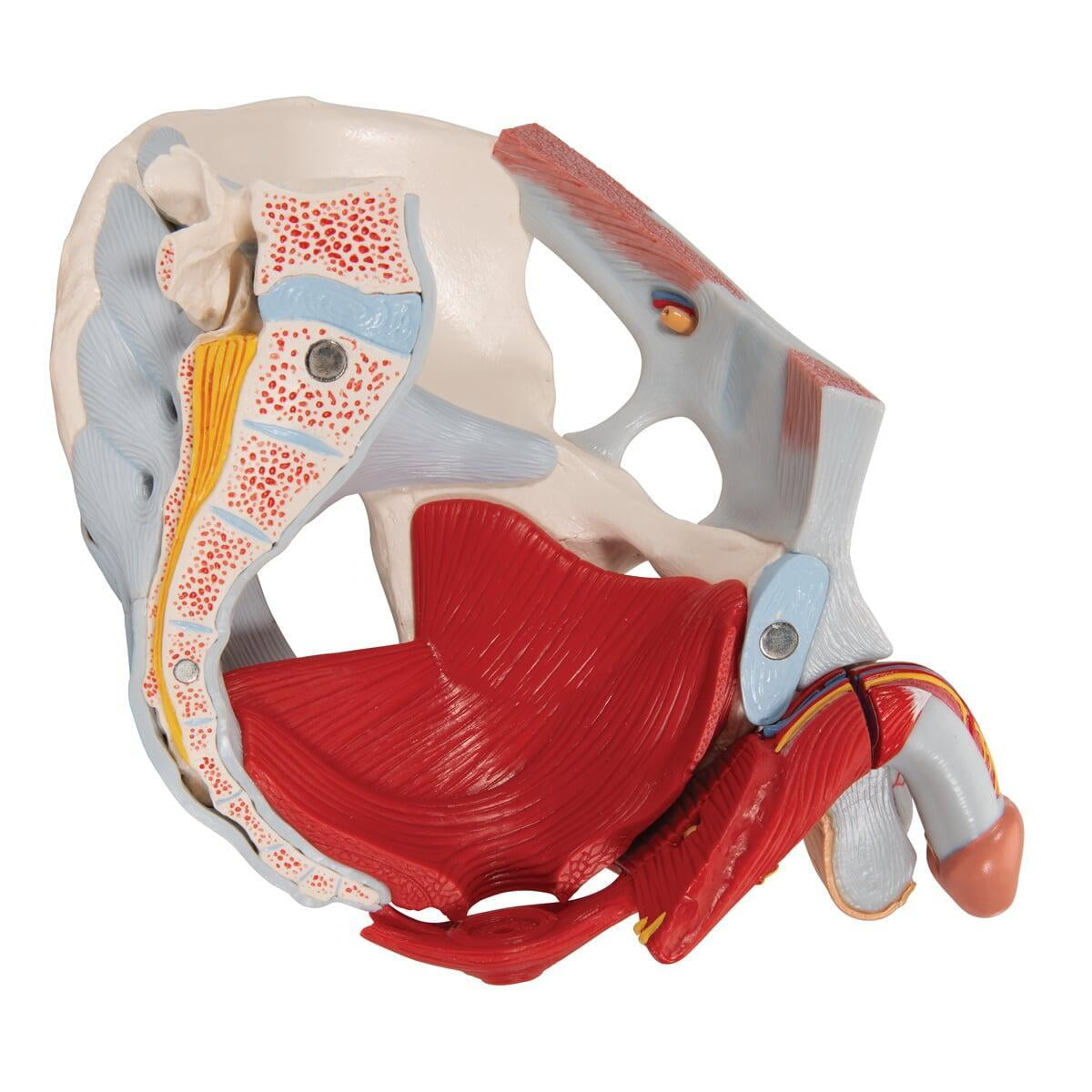Understand better how your muscles, ligaments, and nerves support you.

Introduction
The male pelvic floor is a remarkable structure that plays a vital role in supporting the pelvic organs, maintaining urinary and bowel continence, and contributing to sexual function. Understanding the intricate anatomy of the male pelvic floor is essential for healthcare professionals and individuals seeking to optimize pelvic floor health. In this article, we will delve into the major muscles, nerves, blood supply, and bones that constitute the male pelvic floor.
I. Bones of the Male Pelvic Floor:
The male pelvic floor relies on a framework of bones that provide a sturdy foundation for the pelvic organs and associated structures. These bones include:
- Sacrum: Positioned at the base of the spine, the sacrum is a triangular bone that forms the posterior part of the pelvic cavity. It serves as an attachment site for numerous muscles and ligaments of the pelvic floor, contributing to its stability.
- Coccyx: Commonly known as the tailbone, the coccyx is a small, curved bone situated at the lower end of the sacrum. It offers additional support to the pelvic floor and serves as an anchor for ligaments and muscles.
- Pelvic Girdle: The pelvic girdle comprises two hip bones, or coxal bones, which fuse together during adolescence. Each hip bone consists of the ilium, ischium, and pubis, forming the anterior and lateral aspects of the pelvic cavity. The pelvic girdle provides structural integrity and stability to the male pelvic floor.
II. Muscles of the Male Pelvic Floor:
The male pelvic floor exhibits a complex arrangement of muscles that fulfill crucial functions, including support, control, and movement of the pelvic organs. These muscles can be categorized into three main groups:
- Superficial Muscles: a. Bulbocavernosus: Surrounding the base of the penis, the bulbocavernosus muscle contributes to erectile function and ejaculation. b. Ischiocavernosus: Running along the sides of the penis, the ischiocavernosus muscle aids in maintaining penile erection.
- Middle Muscles: a. Levator Ani Complex: Comprising the pubococcygeus, iliococcygeus, and puborectalis muscles, the levator ani complex provides primary support to the pelvic organs. These muscles assist in maintaining continence, supporting the bladder and rectum, and ensuring stability of the pelvic floor.
- Deep Muscles: Positioned on the outside wall of the pelvis, the obturator internus muscle assumes a fan-shaped configuration. It contributes to the stability of the pelvic floor and facilitates hip rotation. The piriformis muscle, a small and deep muscle, extends from the sacrum to the hip joint. It plays a role in pelvic floor stability and hip rotation.
III. Nerves of the Male Pelvic Floor:
The male pelvic floor receives innervation from a complex network of nerves responsible for sensory and motor functions. The major nerves associated with the pelvic floor include:
- Pudendal Nerve: Emerging from the sacral plexus, the pudendal nerve supplies the muscles and skin of the external genitalia, perineum, and anal region. It governs motor control and sensory perception of the pelvic floor muscles and external genitalia.
- Pelvic Splanchnic Nerves: Originating from the sacral segments of the spinal cord, the pelvic splanchnic nerves, also known as the pelvic autonomic nerves, play a crucial role in regulating various functions of the male pelvic floor. These nerves carry parasympathetic fibers that control the relaxation of the bladder and bowel, as well as the erectile response during sexual arousal.
IV. Blood Supply of the Male Pelvic Floor:
Adequate blood supply is essential for the health and function of the male pelvic floor. The major arteries that contribute to the blood circulation in this region include:
- Internal Iliac Arteries: The internal iliac arteries are the main vessels supplying blood to the pelvic organs and muscles. They branch out into various smaller arteries that provide oxygen and nutrients to the pelvic floor structures.
V. Significance of Male Pelvic Floor Anatomy:
Understanding the detailed anatomy of the male pelvic floor is crucial for diagnosing and treating pelvic floor dysfunctions and disorders. By identifying the specific muscles, nerves, and blood vessels involved, healthcare professionals can develop targeted interventions to address individual needs and restore pelvic floor function.
Moreover, awareness of the male pelvic floor anatomy can empower individuals to take proactive steps in maintaining pelvic floor health. Engaging in regular pelvic floor exercises, adopting a healthy lifestyle, and seeking appropriate medical care can contribute to optimal pelvic floor function and overall well-being.
Conclusion:
The male pelvic floor comprises a complex interplay of muscles, nerves, blood vessels, and bones, all working together to provide support, control, and functionality to the pelvic organs. Understanding the anatomy of the male pelvic floor is essential for the general public and healthcare professionals. If you are experiencing any pelvic floor issues, reach out to us to book an appointment or phone consult so we may help you.


